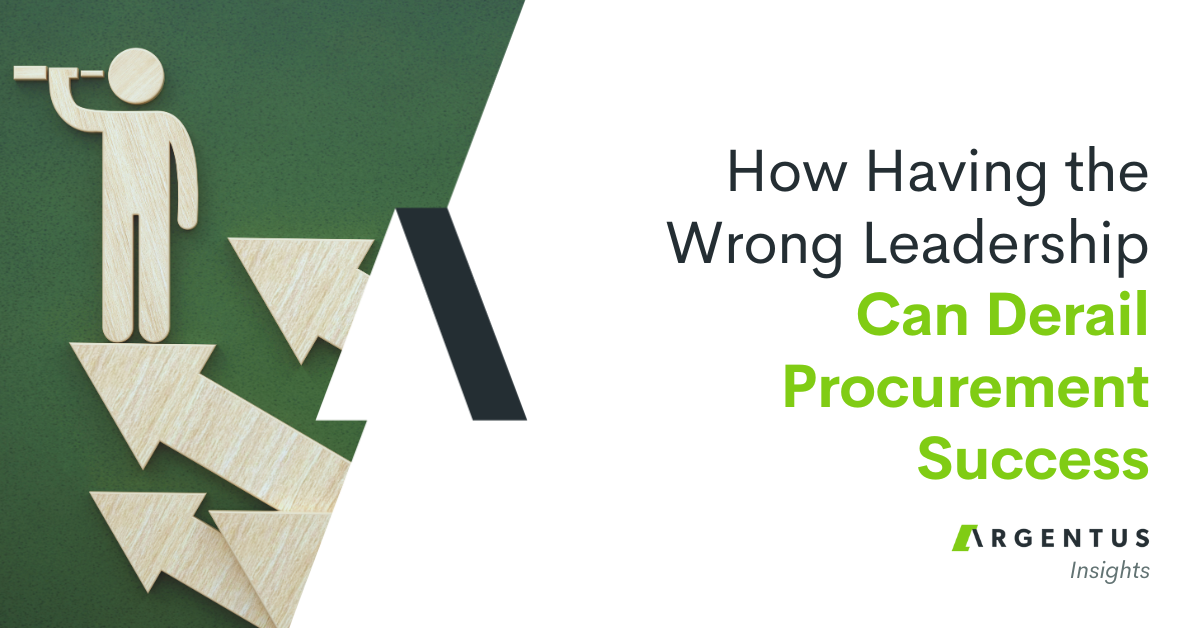This guest post comes from Michael Massetti, a Supply Chain and Procurement leader and subject matter expert based out of the United States.

Prologue:
Did you see it coming? Sometime during the droning sound of The Weather Channel announcers describing Winter Storm Jonas I realized, “Holy cow! There is a gigantic big data event going on.” Not just gigantically big, but galaxy-like big.
How much snow was going to fall? What will the distribution of snow depth be? What is our projected absolute error range? How many plows do we need? Where? What is their capacity? Do we have enough fuel in all of the stations in the target range? Where will the snow all go? Can we calculate which roadways should be cleared first in the city so that assets can be deployed early and be ready (the grid of Manhattan has to be very easy to optimize)? And so on. We just need all of the data.
While the people in the target story zone were fretting over bread and milk, the folks in Buffalo, Syracuse, and Rochester were saying “Let’s get some brie, baguettes, smoked meat, and winter lager and watch those folks out East deal with this event!” While many of us remain skeptical about weather forecasts, communities, cities, and governments cannot afford to under-estimate the potential impact. Readiness is paramount.
The amount of “things” required to prepare for and respond to storms or major events is enormous. Some of the things already are part of the data network needed to manage the response. Many elements are not in place yet (for example, distributed sensors informing the agencies about the current state) and should be part of future planning. The more “things” that can provide data, the better agility we’ll have. We all know, the Internet of Things (Iot) is the next Big Thing! Some say it’s bigger than any other next biggest thing. Ever.
Well, we have our history about weather. We have great models that modern-day media love to show off – despite historical accuracy issues (I wish I got paid to be wrong!). We have supply and capacity in place – but how much can we handle?
Winter Storm Jonas
The storm that is now in the record books provided a tremendous vehicle to assess the full breadth and depth of what’s capable for IoT experiences that can generate unprecedented volumes of real-time data that are rich with the informational nutrients of how to prepare and respond that are truly transformational to society.
This information is essential to the supply chain part of the discussion. Supply chains thrive on timely, accurate data and information to remain both agile and focused. The supply chain elements are the “things” in the Internet of Things aspect of this big data opportunity.
There are big data lakes everywhere along the infrastructure waiting for deeper analysis: transportation, food & beverage, energy distribution, emergency services, consumption trends, and more. These all need to be mined for the requisite information to determine readiness (historical analysis vs. current capacity) and deploy the assets (snow trucks, salt, sand, water, emergency services) when needed – even days ahead! Supply planning starts with historical data about consumption rates and performance and the impending storm event.
“Data is the new science. Big Data holds the answers. Are you asking the right questions?” Patrick P. Gelsinger, Senior High Technology Executive
At one point on TV, one official said “We cannot handle snow above 3 inches per hour!” That’s the capacity of the current system. Is there additional flexible capacity nearby that could have been deployed much earlier? How much more is actually needed? If we moved all of the cars out of the roadways earlier, would our plowing efficiency go up and increase effective capacity? If public officials were given the tools to ensure well-ahead of time that the sufficient supply and capacity was available, the impact of the storms could be measurably less.
If you look at the map above, one can see that areas of the region usually well-prepared and equipped for large snowfalls went un-touched (Great Lakes snow belt, northern New England). Was a formal assessment done to determine if those assets (plows, snow, and emergency crews) were available and mobile enough to help out the storm area? If not, this is an opportunity that the right analytics tools can determine.

With the right system in place to model and determine what is required, the new demand (projected storm size) is loaded into the supply network and artificial intelligence (AI) tools manipulate the data to suggest likely outcomes. The AI engine(s) recommends a full deployment map of all essential infrastructure (capacity) and consumable assets (supply) based on confidence models from the weather predictions. If there are gaps, the model can reach out to other assets close to the region at risk. Ready. Set. Go!
The models that do the weather predicting (demand generation) will eventually feed the emergency system directly and scenarios played out will look at redistribution of supply (assets) within range (cycle time) in advance of the storm. Back to the things part of this, adaptive sensors throughout the affected area will keep pace with storm accumulation and clearance rates to adjust both capacity and supply – an agile supply chain with real-time data. True, there might be occasional errors of over-commission that leaves assets under-utilized, but we know this is a less risky and costly situation than not having assets in place due to under-forecasting.
With the correct supply, projected demand, and historical consumption data available from the aforementioned things, cities will also be able to know in advance where all transportation assets (planes, trains, and automobiles) are sitting and which ones need to go get out of Dodge; which ones to stop from coming in; which ones to store; and which ones are needed. Traffic flows can be adjusted to streamline exit paths and security assets (police and/or National Guard) can be sent out to monitor and guide. They will be redeployed later in the day as the snow begins to accumulate and eventually fades into the sunset. Once it is all said and done, everybody goes home, safe and sound.
Why should anyone ever be stranded on a highway again? The entire system in the affected area can be prepared for the event and take preventive action much earlier. While the chances exist that we over-forecast, the alternative is much worse – which we’ve seen many times in the past.
“Get the milk! Get the bread! Get the toilet paper! It’s gonna snow a ton!”
Once the storm and clean-up are over, there will be a brand new set of data available about the entire event, from the original warning to the last bit of snow moved. These data go into the existing pools of data and help set up the supply/capacity response for the next storm. Of course, record storms reset all of the averages and distribution of potential impacts – future events will benefit from the learning achieved. Simulation models will have new parameters to use during the next event’s planning.
Our ability to respond to widespread severe weather events must be proportional to the degree of recovery needed. This may mean that readiness spreads out geographically. With some capabilities (electricity, for example) the risk is higher that a storm can affect millions of people. Do we have the data and information necessary to help assess and plan for the impact of outages? With information such as this, government and private services can be deployed at the right levels and at the right cost.
Until the next biggest weather-driven supply chain event!
The discussion can really go on longer.
What do you think about this?
Well, time to check out The Weather Channel once more before going down for a long winter’s nap. I’m rooting for NYC to beat its all-time record and watch people stranded helplessly on TV. That’s winning, right?
“Let it snow, let it snow, let it snow!” Sammy Cahn (writer)
Epilogue
After flying successfully from Seattle to New York City’s LaGuardia Airport, the reality of the problem became very evident. Hundreds of people were landing in the NYC airports once the flights were released. Unfortunately, the roads were not quite as ready. Accidents, slow moving traffic, and atypical congestion clogged up the LaGuardia airport late Monday afternoon through the night. Clearly, the incoming traffic exceeded a reasonable level given the overall situation. Busses, shuttles, limos, and taxis could not get through. Rental cars were quite depleted and emergency crews were dealing with the mess. 1 hour and a few dollars later, the driver from Avis accepted my “offer he couldn’t refuse” and took us to the Hertz terminal. Clearly, this is yet another opportunity for minimizing the disruption in this type of event with better data, information, analysis, and integration with the services in the region.
—
A big thank you to Michael Massetti for this guest blog post contribution! ![]()
Have you signed up for Argentus’ Market Watch Newsletter? It only takes a moment. You’ll receive low-volume, high-impact market insights from the top specialty Supply Chain recruiters including: Salary Information, Supply Chain industry trends, Market Intelligence, Personal Branding tips and More!
[mc4wp_form id=”17895″]



0 Comments